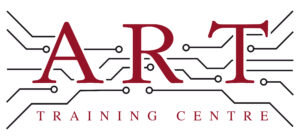Definition
Microsectioning is a process used in electronics manufacturing to analyse the internal structure of materials, such as printed circuit boards (PCBs). It involves cutting a small section of a component or assembly to observe its layers, connections, and potential faults under a microscope. This technique is crucial for quality control and ensuring the reliability of electronic products.
How It’s Used in the Industry
Microsectioning is applied in electronics assembly primarily for inspection and quality assurance. The process begins with selecting a specific area of the PCB or solder joint to be examined. A precise cut is made to create a thin slice, which is then polished to a smooth finish. This sample is mounted on a slide and examined under a microscope to assess the quality of solder joints, component placement, and potential defects. For technicians in training, mastering microsectioning is essential for understanding solder integrity and component reliability, while experienced professionals use it to troubleshoot issues and verify compliance with industry standards.
History & Origins
Microsectioning became common in electronics manufacturing during the mid-20th century as the complexity of circuits increased. The development of standards by organisations such as IPC (Institute for Printed Circuits) in the 1960s and 1970s highlighted the need for rigorous inspection methods. Advances in optical microscopy and cutting techniques made microsectioning a vital tool for manufacturers aiming to ensure product quality and performance in an increasingly competitive market.
Variations
There are several variations of microsectioning techniques, including mechanical microsectioning and laser microsectioning. Mechanical microsectioning involves using a precision saw to slice through materials, while laser microsectioning employs focused laser beams to achieve a cleaner cut. Each method differs in terms of precision and the potential for damage to sensitive components. Understanding these variations is important for learners as they explore the best techniques suited for specific applications in electronics.
Modern Applications
Today, microsectioning is widely used in electronics production, repair, and professional training. It plays a critical role in the inspection of surface mount and through-hole assemblies, providing insights into solder quality and component integrity. As technology advances, microsectioning remains essential for ensuring compliance with IPC standards, enhancing product reliability, and facilitating the development of new electronic designs. Its importance in maintaining high quality and performance standards cannot be overstated.
Practical Tips & Training
When working with microsectioning, it is crucial to use proper safety equipment, such as goggles and gloves, to protect against sharp tools and chemicals. Familiarise yourself with inspection techniques and tools like microtomes and polishing machines. Structured training and certification in microsectioning techniques are vital for ensuring competence and confidence in the field, helping technicians maintain high standards in electronics manufacturing and repair.


